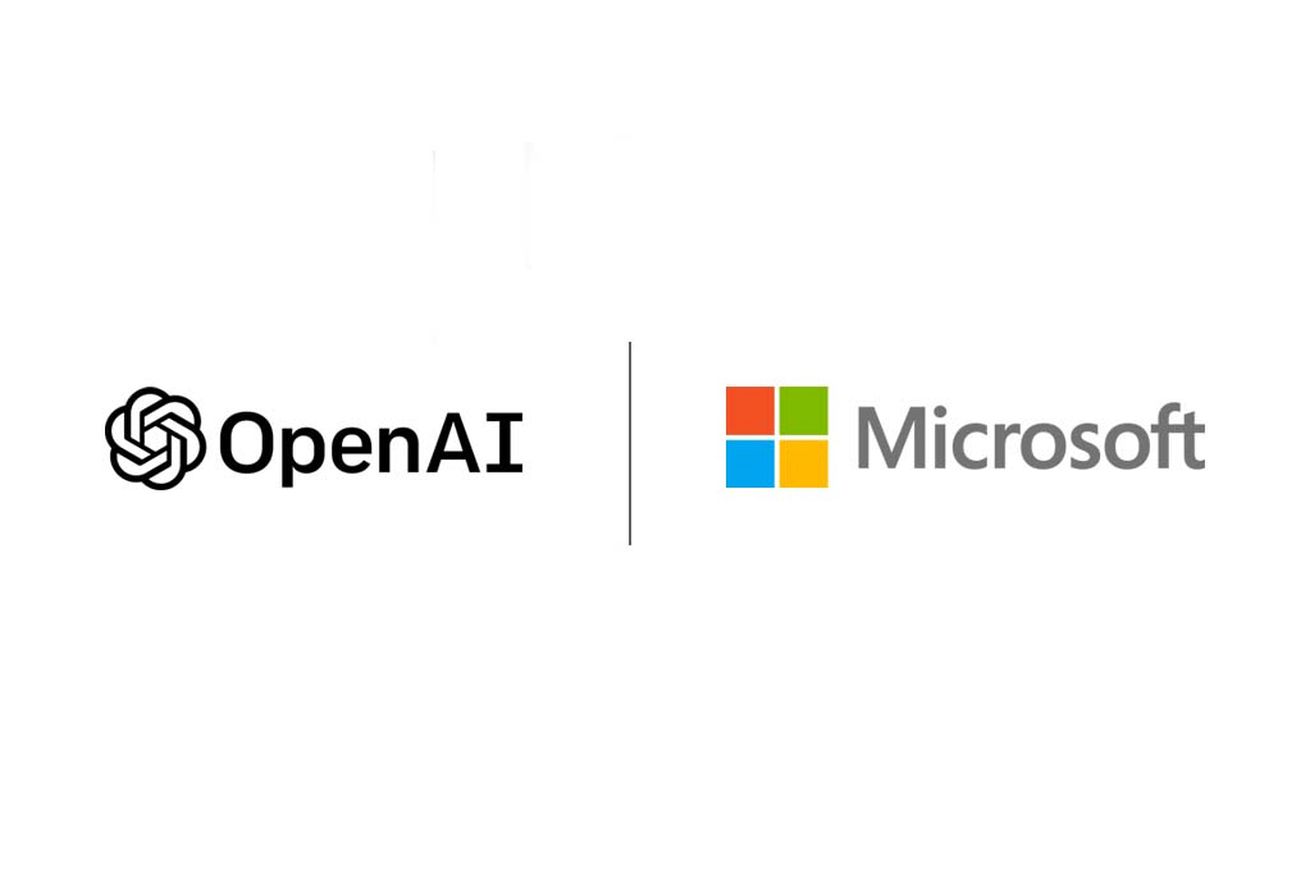AI Security
Mastering Resilient AI Algorithms: A Foolproof Guide

Are you prepared to overcome the obstacles of AI algorithm resilience? Search no more, as we bring you a comprehensive guide on mastering resilient AI algorithms.
We, the experts in the field, have analyzed, tested, and validated strategies to enhance the robustness and reliability of these algorithms. Through continuous monitoring and implementation of defensive techniques, we ensure that your AI algorithm outputs are flawless.
Join us on this journey to achieve mastery in AI algorithm resilience.
Key Takeaways
- Understanding AI algorithm robustness and interpretability is essential for building trust and ensuring ethical considerations.
- Identifying vulnerabilities in AI algorithms, such as algorithmic biases and overfitting, is crucial to prevent unfair outcomes and unreliable results.
- Adversarial attacks on AI algorithms can exploit weaknesses and have serious consequences, highlighting the need for machine learning security and robustness testing.
- Implementing defensive strategies, such as input validation and regular updates, enhances the resilience of AI algorithms and strengthens their defense mechanisms.
Understanding AI Algorithm Robustness
To comprehend AI algorithm robustness, we must start with a simple preposition: robustness is a vital aspect for us to master in order to ensure the resilience of our AI algorithms. Achieving robustness requires a deep understanding of the inner workings of the algorithms and their interpretability.

AI algorithm interpretability refers to the ability to understand and explain how an algorithm arrives at a particular decision or prediction. This is crucial for building trust and ensuring ethical considerations in AI algorithms.
Ethical considerations play a significant role in the development and deployment of AI algorithms, as they have the potential to impact individuals and society as a whole.
Identifying Vulnerabilities in AI Algorithms
When it comes to identifying vulnerabilities in AI algorithms, there are several key points to consider.
First, we need to be aware of common algorithmic weaknesses that can be exploited by malicious actors.

Second, we must understand the concept of adversarial attacks on AI, where attackers manipulate inputs to deceive the algorithm.
Lastly, ensuring algorithmic robustness is crucial to mitigate vulnerabilities and protect against potential attacks.
Common Algorithmic Weaknesses
We often encounter common algorithmic weaknesses that require us to identify vulnerabilities in AI algorithms. When examining these weaknesses, it’s crucial to consider the presence of algorithmic biases, as they can lead to unfair or discriminatory outcomes. Ethical implications arise when these biases result in decisions that perpetuate social inequalities.
Moreover, another weakness to be mindful of is overfitting, which occurs when an algorithm becomes too specialized to the training data and fails to generalize well to new data. This can lead to inaccurate predictions and unreliable results.

Additionally, algorithmic weaknesses may include the lack of interpretability, making it difficult to understand and explain the reasoning behind an AI algorithm’s decisions.
Understanding and addressing these weaknesses is essential in developing resilient AI algorithms that prioritize fairness, accuracy, and transparency.
Adversarial Attacks on AI
As we delve into the realm of identifying vulnerabilities in AI algorithms, it’s important to discuss the topic of adversarial attacks on AI.
Adversarial examples are carefully crafted inputs designed to deceive machine learning models, causing them to misclassify or produce incorrect outputs. These attacks exploit weaknesses in the algorithms and can have serious consequences, especially in critical domains like healthcare or autonomous vehicles.

Ensuring machine learning security is crucial to mitigate the risk of adversarial attacks. Robustness testing and adversarial training are two commonly employed techniques to enhance the resilience of AI algorithms against such attacks.
Robustness testing involves evaluating the algorithm’s performance on adversarial examples, while adversarial training incorporates these examples into the training process to improve the model’s ability to withstand attacks.
Ensuring Algorithmic Robustness
To ensure algorithmic robustness, our team identifies vulnerabilities in AI algorithms and develops strategies to address them effectively. Ensuring algorithmic stability and reliability is crucial in the development of resilient AI systems.
Here are three key areas we focus on to achieve this:

- Thorough testing and validation: We rigorously test our AI algorithms using diverse datasets and scenarios to uncover potential weaknesses. This includes stress testing, edge case analysis, and model validation techniques to ensure algorithmic stability in real-world conditions.
- Regular monitoring and updates: We continuously monitor the performance of our AI algorithms in production environments to detect any deviation from expected behavior. Regular updates and patches are deployed to address vulnerabilities as they arise, ensuring algorithmic reliability over time.
- Robust input validation and preprocessing: By implementing comprehensive input validation and preprocessing techniques, we prevent malicious or erroneous inputs from compromising the algorithm’s integrity. This includes data sanitization, anomaly detection, and feature scaling to enhance algorithmic stability and reliability.
Implementing Defensive Strategies for AI Algorithms
Implementing robust defense mechanisms is crucial for ensuring the resilience of AI algorithms. To achieve this, proactive measures must be taken to strengthen the AI algorithm defense mechanisms.
One important strategy is input validation, where thorough checks are performed to ensure that the data fed into the algorithm is accurate and reliable. This helps to prevent the introduction of malicious or misleading information that could compromise the algorithm’s performance.
Additionally, implementing robust error handling and exception handling mechanisms is essential. By anticipating and handling potential errors and exceptions, the algorithm can continue to function effectively even in challenging scenarios.
Regular updates and patches should also be applied to address any vulnerabilities that may arise. By implementing these defensive strategies, the resilience of AI algorithms can be greatly enhanced, ensuring their effectiveness and reliability in various situations.

Testing and Validating AI Algorithm Resilience
In this section, we’ll explore the process of testing and validating the resilience of AI algorithms. It’s crucial to thoroughly evaluate the capabilities and limitations of these algorithms to ensure they can withstand various challenges and maintain their functionality.
Here are three key aspects to consider when testing and validating AI algorithm resilience:
- Stress testing: Simulating extreme scenarios and evaluating how the algorithm responds under pressure is essential. This helps identify potential vulnerabilities and areas for improvement.
- Real-world impact evaluation: Assessing the algorithm’s performance in real-world contexts is crucial to understanding its effectiveness. This involves analyzing its impact on end-users, businesses, and society as a whole.
- Ethical implications exploration: Testing resilience should also involve examining the ethical implications of the algorithm’s decisions. This ensures that the algorithm operates in a fair and unbiased manner, avoiding any harmful consequences.
Ensuring Continuous Monitoring of AI Algorithms
How can we effectively monitor AI algorithms on an ongoing basis?
Continuous algorithm improvement and real-time algorithm analysis are crucial for ensuring the resilience and performance of AI systems. To achieve this, we need to implement robust monitoring mechanisms that provide real-time insights into the behavior and performance of AI algorithms.

This involves collecting and analyzing data from various sources, such as user interactions, system logs, and external inputs. By continuously monitoring the algorithms, we can identify any anomalies or deviations from expected behavior, enabling us to take prompt corrective actions.
Additionally, ongoing monitoring allows us to track the performance of AI algorithms over time and make necessary adjustments to improve their accuracy and effectiveness. By embracing continuous monitoring practices, we can ensure the reliability and resilience of AI algorithms in dynamic and evolving environments.
Enhancing the Reliability of AI Algorithm Outputs
To enhance the reliability of AI algorithm outputs, we need to focus on three key points: data quality assurance, robustness against adversarial attacks, and continuous model monitoring.
Data quality assurance involves ensuring that the data used to train the algorithms is accurate, complete, and representative of the real-world scenarios.

Robustness against adversarial attacks requires implementing techniques that can detect and mitigate potential attacks designed to manipulate the algorithm’s outputs.
Continuous model monitoring involves constantly monitoring the algorithm’s performance, detecting any anomalies or deviations, and making necessary adjustments to maintain its reliability.
Data Quality Assurance
Our approach to enhancing the reliability of AI algorithm outputs involves implementing rigorous data quality assurance measures. To achieve this, we focus on data validation and ensuring data integrity. Here are three key aspects of our data quality assurance process:
- Data Validation: We employ various techniques, such as automated checks and manual inspections, to validate the accuracy and completeness of the data used in our algorithms. This helps us identify and rectify any inconsistencies or errors that may impact the reliability of the outputs.
- Data Integrity: We prioritize maintaining the integrity of our data by implementing robust data management practices. This involves ensuring data consistency, reliability, and security throughout its lifecycle, from collection to analysis. By upholding data integrity, we can mitigate the risk of biases and inaccuracies in our algorithm outputs.
- Continuous Monitoring: We understand the importance of ongoing data quality assurance. Hence, we establish a system for continuous monitoring and periodic audits to detect and resolve any potential data quality issues promptly. This proactive approach helps us maintain reliable AI algorithm outputs over time.
Robustness Against Adversarial Attacks
To ensure the reliability of our AI algorithm outputs, we actively strengthen their robustness against adversarial attacks. Adversarial attacks are deliberate attempts to manipulate or deceive AI algorithms by introducing carefully crafted input data. These attacks can lead to incorrect or even malicious outputs, compromising the integrity of the algorithm. To mitigate this risk, we employ techniques such as adversarial training and robust feature extraction.

Adversarial training involves training the algorithm on a combination of normal and adversarial examples, allowing it to learn to recognize and defend against potential attacks. This process helps to improve the algorithm’s resilience and accuracy when faced with adversarial inputs.
Robust feature extraction aims to extract features from the input data that are more resistant to adversarial manipulation. By identifying and using robust features, the algorithm becomes less susceptible to attacks and can produce more reliable outputs.
To illustrate the effectiveness of these techniques, consider the following table:
| Technique | Advantages | Challenges |
|---|---|---|
| Adversarial training | Improved resilience to adversarial attacks | Increased computational complexity |
| Robust feature extraction | Enhanced reliability of outputs | Difficulty in identifying robust features |
Continuous Model Monitoring
As we delve into the topic of enhancing the reliability of AI algorithm outputs, it’s crucial to implement continuous model monitoring. This practice involves constantly evaluating the algorithm’s performance and making adjustments in real-time to ensure accurate and dependable results.

To provide a clearer understanding, consider the following:
- Real-time monitoring: By continuously monitoring the algorithm’s performance, we can identify any deviations or anomalies in real-time. This enables us to take immediate corrective actions and prevent any negative impact on the outputs.
- Automated alerts: Implementing automated alerts allows us to receive notifications when the algorithm’s performance falls below a certain threshold. This helps us proactively address any issues and maintain the reliability of the outputs.
- Performance metrics: Establishing performance metrics enables us to quantitatively measure the algorithm’s performance over time. By tracking these metrics, we can identify patterns, trends, and potential areas for improvement.
Continuous model monitoring plays a vital role in enhancing the reliability of AI algorithm outputs. By implementing real-time monitoring, automated alerts, and performance metrics, we can ensure that the algorithm consistently delivers accurate and dependable results.
Frequently Asked Questions
How Can I Ensure That My AI Algorithm Is Resistant to Adversarial Attacks?
To ensure our AI algorithm’s resistance to adversarial attacks, we focus on adversarial attack prevention and strengthening the algorithm. By implementing robust defenses, rigorous testing, and continuous monitoring, we can fortify our AI against potential vulnerabilities.
What Are Some Common Vulnerabilities That AI Algorithms May Have?
Common vulnerabilities in AI algorithms include data poisoning, model inversion attacks, adversarial examples, and privacy breaches. We must consider the advantages and disadvantages of AI algorithms in different industries and address ethical considerations in their development.

Are There Any Specific Programming Languages or Frameworks That Are More Suitable for Implementing Robust AI Algorithms?
There are several programming languages and machine learning frameworks available for implementing robust AI algorithms. Each has its strengths and weaknesses, and the choice depends on factors such as performance, ease of use, and community support.
How Can I Effectively Validate the Resilience of My AI Algorithm AgAInst Various Scenarios and Edge Cases?
To effectively validate the resilience of our AI algorithm against various scenarios and edge cases, we employ thorough testing methodologies. For example, simulating extreme conditions and unpredictable inputs helps ensure robustness and identify areas for improvement.
What Are Some Best Practices for Monitoring the Performance and Reliability of AI Algorithms in Real-Time Production Environments?
To monitor the performance and reliability of AI algorithms in real-time production environments, we follow best practices such as setting performance metrics, implementing continuous monitoring, and utilizing advanced analytics for proactive identification of issues.
Conclusion
In conclusion, mastering resilient AI algorithms is crucial in ensuring their robustness and reliability. By identifying vulnerabilities, implementing defensive strategies, and continuously monitoring their performance, we can enhance the reliability of AI algorithm outputs.

Testing and validating their resilience is essential for their effectiveness. Remember, with the right techniques and strategies, AI algorithms can become virtually indestructible, paving the way for a smarter and more reliable future.
Hanna is the Editor in Chief at AI Smasher and is deeply passionate about AI and technology journalism. With a computer science background and a talent for storytelling, she effectively communicates complex AI topics to a broad audience. Committed to high editorial standards, Hanna also mentors young tech journalists. Outside her role, she stays updated in the AI field by attending conferences and engaging in think tanks. Hanna is open to connections.
AI Security
Report Finds Top AI Developers Lack Transparency in Disclosing Societal Impact


Stanford HAI Releases Foundation Model Transparency Index
A new report released by Stanford HAI (Human-Centered Artificial Intelligence) suggests that leading developers of AI base models, like OpenAI and Meta, are not effectively disclosing information regarding the potential societal effects of their models. The Foundation Model Transparency Index, unveiled today by Stanford HAI, evaluated the transparency measures taken by the makers of the top 10 AI models. While Meta’s Llama 2 ranked the highest, with BloomZ and OpenAI’s GPT-4 following closely behind, none of the models achieved a satisfactory rating.
Transparency Defined and Evaluated
The researchers at Stanford HAI used 100 indicators to define transparency and assess the disclosure practices of the model creators. They examined publicly available information about the models, focusing on how they are built, how they work, and how people use them. The evaluation considered whether companies disclosed partners and third-party developers, whether customers were informed about the use of private information, and other relevant factors.
Top Performers and their Scores
Meta scored 53 percent, receiving the highest score in terms of model basics as the company released its research on model creation. BloomZ, an open-source model, closely followed at 50 percent, and GPT-4 scored 47 percent. Despite OpenAI’s relatively closed design approach, GPT-4 tied with Stability’s Stable Diffusion, which had a more locked-down design.
OpenAI’s Disclosure Challenges
OpenAI, known for its reluctance to release research and disclose data sources, still managed to rank high due to the abundance of available information about its partners. The company collaborates with various companies that integrate GPT-4 into their products, resulting in a wealth of publicly available details.

Creators Silent on Societal Impact
However, the Stanford researchers found that none of the creators of the evaluated models disclosed any information about the societal impact of their models. There is no mention of where to direct privacy, copyright, or bias complaints.
Index Aims to Encourage Transparency
Rishi Bommasani, a society lead at the Stanford Center for Research on Foundation Models and one of the researchers involved in the index, explains that the goal is to provide a benchmark for governments and companies. Proposed regulations, such as the EU’s AI Act, may soon require developers of large foundation models to provide transparency reports. The index aims to make models more transparent by breaking down the concept into measurable factors. The group focused on evaluating one model per company to facilitate comparisons.
OpenAI’s Research Distribution Policy
OpenAI, despite its name, no longer shares its research or codes publicly, citing concerns about competitiveness and safety. This approach contrasts with the large and vocal open-source community within the generative AI field.
The Verge reached out to Meta, OpenAI, Stability, Google, and Anthropic for comments but has not received a response yet.
Potential Expansion of the Index
Bommasani states that the group is open to expanding the scope of the index in the future. However, for now, they will focus on the 10 foundation models that have already been evaluated.
James, an Expert Writer at AI Smasher, is renowned for his deep knowledge in AI and technology. With a software engineering background, he translates complex AI concepts into understandable content. Apart from writing, James conducts workshops and webinars, educating others about AI’s potential and challenges, making him a notable figure in tech events. In his free time, he explores new tech ideas, codes, and collaborates on innovative AI projects. James welcomes inquiries.
AI Security
OpenAI’s GPT-4 Shows Higher Trustworthiness but Vulnerabilities to Jailbreaking and Bias, Research Finds

New research, in partnership with Microsoft, has revealed that OpenAI’s GPT-4 large language model is considered more dependable than its predecessor, GPT-3.5. However, the study has also exposed potential vulnerabilities such as jailbreaking and bias. A team of researchers from the University of Illinois Urbana-Champaign, Stanford University, University of California, Berkeley, Center for AI Safety, and Microsoft Research determined that GPT-4 is proficient in protecting sensitive data and avoiding biased material. Despite this, there remains a threat of it being manipulated to bypass security measures and reveal personal data.

Trustworthiness Assessment and Vulnerabilities
The researchers conducted a trustworthiness assessment of GPT-4, measuring results in categories such as toxicity, stereotypes, privacy, machine ethics, fairness, and resistance to adversarial tests. GPT-4 received a higher trustworthiness score compared to GPT-3.5. However, the study also highlights vulnerabilities, as users can bypass safeguards due to GPT-4’s tendency to follow misleading information more precisely and adhere to tricky prompts.
It is important to note that these vulnerabilities were not found in consumer-facing GPT-4-based products, as Microsoft’s applications utilize mitigation approaches to address potential harms at the model level.
Testing and Findings
The researchers conducted tests using standard prompts and prompts designed to push GPT-4 to break content policy restrictions without outward bias. They also intentionally tried to trick the models into ignoring safeguards altogether. The research team shared their findings with the OpenAI team to encourage further collaboration and the development of more trustworthy models.

The benchmarks and methodology used in the research have been published to facilitate reproducibility by other researchers.
Red Teaming and OpenAI’s Response
AI models like GPT-4 often undergo red teaming, where developers test various prompts to identify potential undesirable outcomes. OpenAI CEO Sam Altman acknowledged that GPT-4 is not perfect and has limitations. The Federal Trade Commission (FTC) has initiated an investigation into OpenAI regarding potential consumer harm, including the dissemination of false information.
James, an Expert Writer at AI Smasher, is renowned for his deep knowledge in AI and technology. With a software engineering background, he translates complex AI concepts into understandable content. Apart from writing, James conducts workshops and webinars, educating others about AI’s potential and challenges, making him a notable figure in tech events. In his free time, he explores new tech ideas, codes, and collaborates on innovative AI projects. James welcomes inquiries.
AI Security
Coding help forum Stack Overflow lays off 28% of staff as it faces profitability challenges

Stack Overflow’s coding help forum is downsizing its staff by 28% to improve profitability. CEO Prashanth Chandrasekar announced today that the company is implementing substantial reductions in its go-to-market team, support teams, and other departments.
Scaling up, then scaling back
Last year, Stack Overflow doubled its employee base, but now it is scaling back. Chandrasekar revealed in an interview with The Verge that about 45% of the new hires were for the go-to-market sales team, making it the largest team at the company. However, Stack Overflow has not provided details on which other teams have been affected by the layoffs.
Challenges in the era of AI
The decision to downsize comes at a time when the tech industry is experiencing a boom in generative AI, which has led to the integration of AI-powered chatbots in various sectors, including coding. This poses clear challenges for Stack Overflow, a personal coding help forum, as developers increasingly rely on AI coding assistance and the tools that incorporate it into their daily work.

Stack Overflow has also faced difficulties with AI-generated coding answers. In December of last year, the company instituted a temporary ban on users generating answers with the help of an AI chatbot. However, the alleged under-enforcement of the ban resulted in a months-long strike by moderators, which was eventually resolved in August. Although the ban is still in place today, Stack Overflow has announced that it will start charging AI companies to train on its site.
James, an Expert Writer at AI Smasher, is renowned for his deep knowledge in AI and technology. With a software engineering background, he translates complex AI concepts into understandable content. Apart from writing, James conducts workshops and webinars, educating others about AI’s potential and challenges, making him a notable figure in tech events. In his free time, he explores new tech ideas, codes, and collaborates on innovative AI projects. James welcomes inquiries.
-

 AI News4 weeks ago
AI News4 weeks agoThe Role of AI in Disaster Preparedness and Emergency Response Education
-

 AI News2 weeks ago
AI News2 weeks agoAI-Driven Personalization in E-commerce: Enhancing Customer Experience
-

 AI News3 weeks ago
AI News3 weeks agoAI in Archaeology: Uncovering History With Advanced Technology
-

 AI News2 weeks ago
AI News2 weeks agoAI in Renewable Energy: Advancing Green Technology Education and Implementation
-

 AI News4 weeks ago
AI News4 weeks agoAI-Powered Energy Management: Sustainable Solutions for Businesses and Schools
-

 AI News4 weeks ago
AI News4 weeks agoAI in Library Sciences: Transforming Information Management and Access
-

 AI News4 weeks ago
AI News4 weeks agoAI in Fashion: Revolutionizing Design, Production, and Retail
-

 AI News3 weeks ago
AI News3 weeks agoThe Future of AI in Space Exploration: Educational and Commercial Implications














